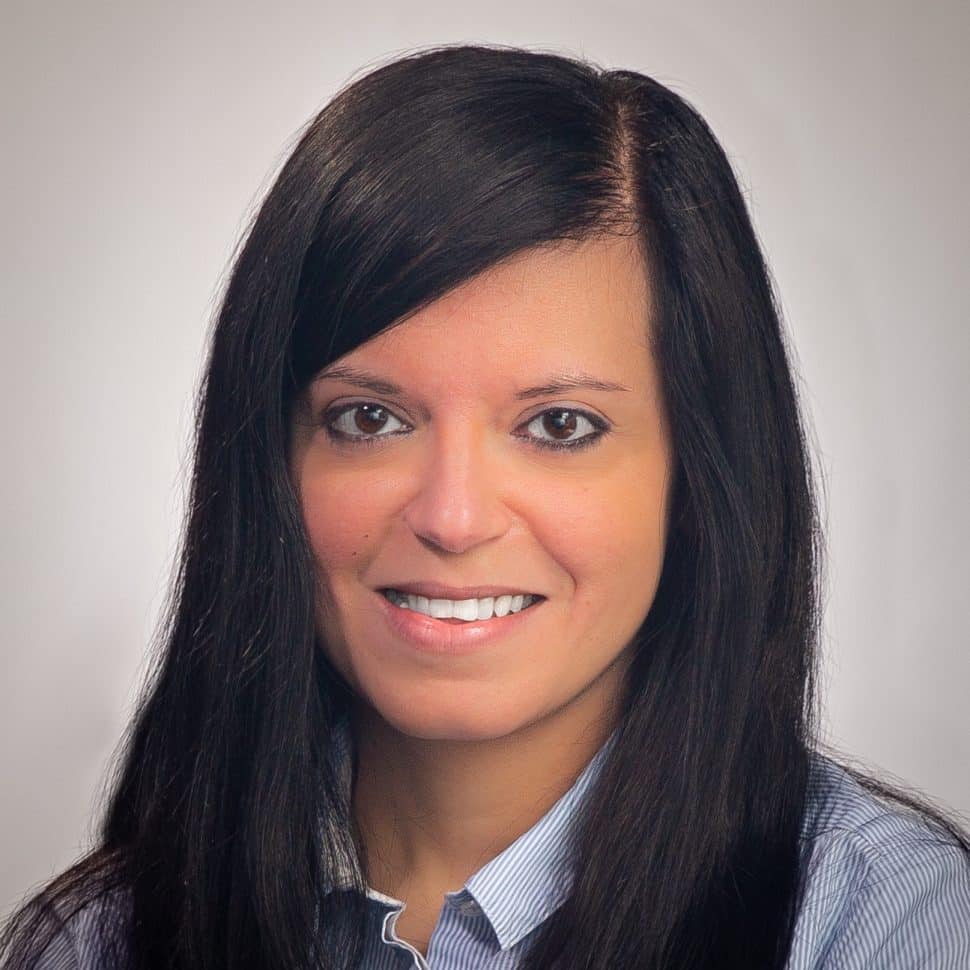Leveraging TTFields for Residual Glioblastoma Disease
By Alice Bradbury, PhD
Having always been fascinated with the complexity of the human brain, it was whilst Sara G.M. Piccirillo, PhD, was an undergraduate student at the National Carlo Besta Neurological Institute in her hometown of Milan, Italy, that she became inspired to pursue glioblastoma research.
“There is an urgent clinical need to improve the quality of life and survival of glioblastoma patients,” she says, “The possibility of contributing to improving glioblastoma patient survival has represented a strong motivation for my research.”
An assistant professor at the University of New Mexico Health Sciences Center, Dr. Piccirillo received an AACR-Novocure Tumor Treating Fields Research Grant in 2021.

The grant, borne out of a joint effort between the AACR and Novocure, aims to promote and support innovative research focused on Tumor Treating Fields (TTFields) – intermediate frequency, low intensity, alternating electric fields that disrupt cellular processes critical for cancer cell survival and tumor progression (1-3).
The standard of care treatment for glioblastoma is surgery, followed by radiotherapy or chemotherapy. However, in 2011 and in 2015 the FDA approved the TTFields therapy delivery system, Optune, for the treatment of adult patients with recurrent and newly-diagnosed glioblastoma (1-3).
Dr. Piccirillo previously found that disease left behind after surgery (residual disease) in glioblastoma patients, was different from the resected tumor (4-5). Following on from this work, and with the AACR-Novocure grant, Dr. Piccirillo and her team are investigating the impact of TTFields on residual disease.
“The characterization of the residual disease poses a challenge, as these areas are extremely small and need to be objectively identified,” she explains, “Moreover, targeting residual disease is not offered as part of the standard of care for glioblastoma patients therefore, to date, these areas are completely understudied.”
By utilizing a multiple-sampling collection technique that she helped develop during her postdoctoral research (6) at the University of Cambridge, UK, Dr. Piccirillo and her team can collect and isolate treatment resistant cancer stem-like cells from residual disease areas.
“This work bridges tumor & stem cell biology, with cancer genomics and neurosurgery, and our findings are obtained by the direct analysis of patient samples,” she said. “To our knowledge, this is the first time that the impact of TTFields on residual disease is investigated at the single-cell level by using cancer stem-like cells that are maintained in culture conditions to preserve the genotype and the phenotype of the original tumors.”
Owing to the partnership between AACR and Novocure, Dr. Piccirillo is able to utilize the inovitro system, proprietary to Novocure, in her research. A high-throughput, plug-and-play research tool, the inovitro system allows application of TTFields to cell cultures, mimicking the TTFields treatment provided to patients with the Optune TTFields delivery system.
As well as access to the inovitro system, Dr. Piccirillo highlighted “I have joined a community of investigators throughout the world working with Novocure on TTFields. With them, we exchange knowledge and our research findings in user meetings.”
“Moreover, I have joined the community of the AACR grantees and I have participated regularly in the AACR grantee clubs. This is a unique opportunity to meet other investigators at a similar stage of my career, learn about their research funded by the AACR, and find potential collaborators,” she remarked.
“The AACR-Novocure grant has had a tremendous impact on my career,” she said. Whilst this was the first external grant awarded to Dr. Piccirillo, she has since received subsequent grants and her success was recently recognized by her institution with an endowment to support her laboratory, and the title of ‘The Robert M. Faxon Jr. Endowed Professor in Neuro-Oncology’.
Excluding the approval of TTFields therapy, the development of effective therapeutics to treat glioblastoma has seen minimal progress over the decades. A major barrier to this being the limited understanding of the heterogeneity of glioblastoma.
However, recent years have seen greater utilization of multi-omics approaches to dissect glioblastoma heterogeneity revealing the extensive spatial and temporal heterogeneity of glioblastoma, and cancer stem-like populations.
“We are encouraged by the possibility of gaining a greater understanding of the heterogeneous nature of glioblastoma, and translating this knowledge into therapeutic opportunities,” Dr. Piccirillo explains, “Our objective is to gain a greater understanding of glioblastoma biology by elucidating the functional consequences of genetic and phenotypic heterogeneity on therapeutic resistance and tumor growth after treatment.”
“Our long-term goal is to identify patient-specific targets and contribute to the development of more effective treatments for glioblastoma patients,” she said.
References:
- Kirson ED, Gurvich Z, Schneiderman R, Dekel E, Itzhaki A, Wasserman Y, et al. Disruption of cancer cell replication by alternating electric fields. Cancer Res. 2004;64:3288-3295.
- Mun EJ, Babiker HM, Weinberg U, Kirson ED, von Hoff DD. Tumor-Treating Fields: A Fourth Modality in Cancer Treatment. Clin Cancer Res. 2018;24:266-275.
- Rominiyi, O., Vanderlinden, A., Clenton, S.J. et al. Tumour treating fields therapy for glioblastoma: current advances and future directions. Br J Cancer. 2021;124:697–709.
- Piccirillo SG, Spiteri I, Sottoriva A, Touloumis A, Ber S, Price SJ, et al. Contributions to drug resistance in glioblastoma derived from malignant cells in the sub-ependymal zone. Cancer Res 2015;75:194-202.
- Spiteri I, Caravagna G, Cresswell GD, Vatsiou A, Nichol D, Acar A, et al. Evolutionary dynamics of residual disease in human glioblastoma. Ann Oncol. 2019 Mar 1;30:456-463.
- García-Montaño LA, Licón-Muñoz Y, Martinez FJ, Keddari YR, Ziemke MK, Chohan MO, Piccirillo SGM. Dissecting intra-tumor heterogeneity in the glioblastoma microenvironment using fluorescence-guided multiple sampling. Mol Cancer Res. 2023 May 31:OF1-OF13.